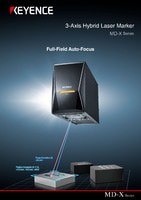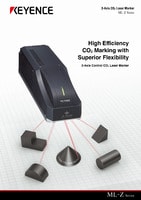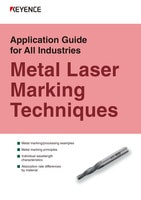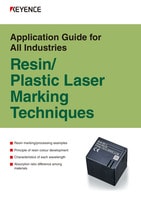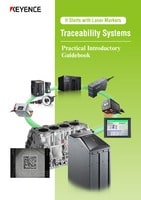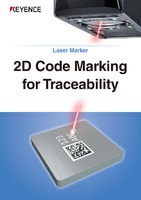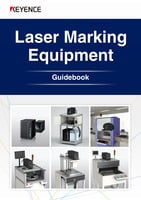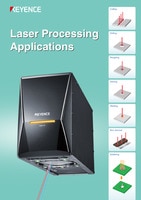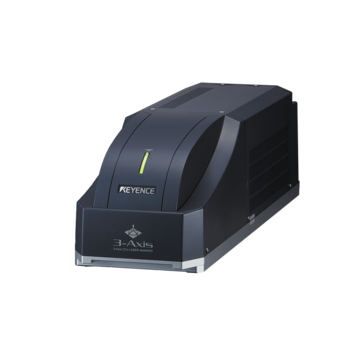Laser Marking Systems / Laser Markers
Laser Paint Removal
Laser paint removal technology has continued to emerge in recent years as it offers limitless possibilities and can be used in a myriad of applications. For example, laser marking paint removal can quickly and effectively remove layers of paint or plating from plastics, metals, and other surfaces. This process is an incredibly useful tool for those in the automotive, aerospace, agriculture, construction, and manufacturing industries. These industries use laser paint removal for a variety of parts and materials for numerous reasons.
One of the biggest advantages of using lasers for paint and surface removal is that it is fast, efficient, and cost-effective compared to traditional methods like sandblasting or chemical stripping. Since no physical contact is made with the material being removed, there is less risk of damage to surrounding areas which can save time and money in cleanup costs. This makes it an optimal choice for high-volume needs. With processes such as masking, ongoing maintenance is often required. On the other hand, laser paint removal can be fully automated, allowing for significant savings.
Additionally, since laser beams can be focused with pinpoint accuracy, they can be used to selectively remove certain areas while leaving others untouched. This accuracy is useful as it gives users greater control over their projects. Lastly, because lasers do not use any hazardous chemicals, there are no environmental hazards associated with their use.
Learn how lasers are used for paint removal and surface removal (the process that peels the film or plating from a target).
Basic Principles of Paint Peeling Using Laser Markers
Also known as laser ablation and laser coating removal, laser energy is focused on the material, and short pulses repeat. These pulses ultimately release the coating from the surface, leaving the desired marking and surface intact. In simple terms, laser removal involves removing the surface coating of plastic to expose the base material or coating underneath.
In the shift lever processing example below, the black coating on the plastic was removed to allow light to pass through to the coloured material underneath. Laser-marking paint removal is useful for exposing multiple layers of plastics (such as black, red and green coatings).


Shift lever paint peeling
Paint Removal Machines

3-Axis Hybrid Laser Marker MD-X Series
While commonly purposed for marking applications, the 3-Axis Hybrid Laser Marker MD-X Series is perfect for ablation needs as well. The level of flexibility attained through it's variable Z-Axis scanner, automatic position adjustment, and high peak power allow make it an ideal fit for a vast array of ablation applications.
Since IR (Infrared) light travels through transparent and translucent materials, it is optimal for paint removal applications where the underlying substrate falls into these categories. The MD-X will efficiently and effectively remove all paint or coating without any negative impact on the plastic beneath.

3-Axis CO2 Laser Marker ML-Z Series
The 3-Axis CO2 Laser Marker ML-Z Series is a CO2 laser system designed specifically with paint ablation and other processing needs in mind. KEYENCE's 3-Axis control keeps the ML-Z perfectly in focus throughout it's large field of view and allows it to account for focal depth changes, unlocking the potential to ablate paint or other coatings from non-flat objects.
The ML-Z is perfect for any application where paint needs to be removed from a metal substrate. The very long (10600 nm) wavelength of the ML-Z is able to quickly remove the paint layer while having zero impact on the underlying metal. It's large beamspot and high output power allow for incredibly fast ablation without the fear of leaving paint behind.
Application Explanation

On-board instrument panel switch paint peeling
Creating contrast on vehicle switches is usually done one of two ways: either the desired contents are printed on top, or the paint is removed with a chemical or removal agent. However, the former method requires custom printing plates for each mark, while the latter method involves expensive chemical consumables. Laser markers simplify this application because they can peel the paint off the part via laser irradiation.

Cars with illuminated switches are becoming much more common, requiring fast and effective processes to meet the demand. For automotive manufacturers producing both EV and gas-powered vehicles, having efficient technology like this is critical to the bottom line. Many have ditched traditional methods, such as masking, due to the increased costs and time that they involve. As a result, laser markers are being rapidly adopted thanks to their ease of use.
These laser paint removal tools are being utilised on larger parts and components like airplanes, as manufacturers have found it to save significant amounts of time while eliminating hazardous waste. Because planes need their coatings removed every five years or so (due to branding changes, fading paint, and inspection purposes), having the right tools and technology for the job is paramount.
Laser marker machines, such as our 3-Axis Hybrid MD-X Series, are the perfect fit for marking these types of parts. Their built-in vision automatically identifies a target’s shape to ensure the marking position is always accurate. Another useful feature is the system can distinguish between parts and mark each part correctly based on its unique shape, size, and requirements. For example, the marker can quickly identify and differentiate between onboard instrument panel switches solely based on their sizes.
Overall, laser paint and surface removal is an incredibly useful tool for quickly removing layers of paint or plating from various surfaces. This is all completed efficiently without damaging surrounding areas or introducing hazardous chemicals into the environment. For those who work in the automobile industry or manufacturing, laser paint removal and laser marking machines will continue to provide the technology that is required to meet demands.

